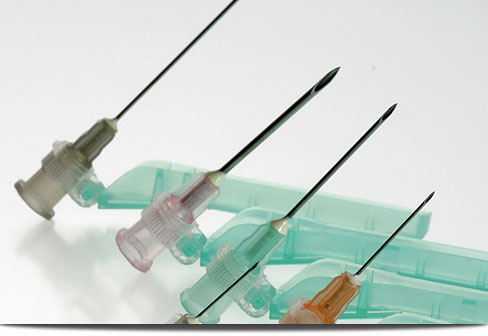Bloodborne Standard
29 CFR 1910.1030
Methods of Compliance: Employer Responsibilities
Engineering and Work Practice Controls
Engineering and work practice controls are required by the standard to be used by employers as the primary method to reduce or eliminate employee exposure. When considering engineering controls, these are utilized to reduce employee exposure by either removing or isolating the hazard or isolating the employee from exposure. Examples of engineering controls include self-sheathing needles, puncture-resistant containers for contaminated sharps disposal.
Work practice controls alter the method a task is completed to make the task safer. Prohibiting recapping, removing or bending needles unless no other exists; enforcing hand washing procedures following the removal of gloves, restricting eating and drinking in work areas; and decontaminating equipment before servicing are all examples of work practice controls.
If the exposure is still present after use of these controls, it is the responsibility of the employer to ensure employees are provided and use personal protective equipment as additional protection. The standard also recognizes that these two methods may be implemented together; that engineering controls may still need work practice controls.
Now test your knowledge! You do not need a minimum score for any of the DragNDrop activities. These are to help review the material covered thus far!
 |
Drag the items from the bottom to the slots on the right. You will not be allowed to incorrectly identify the items. |
|
This content requires JavaScript enabled.
|
|
If you have any questions at any time regarding the information presented in this tutorial, please contact David Sullivan at 910-916-0688.
(North Carolina Department of Labor (2010). A guide to bloodborne pathogens in the workplace.)



